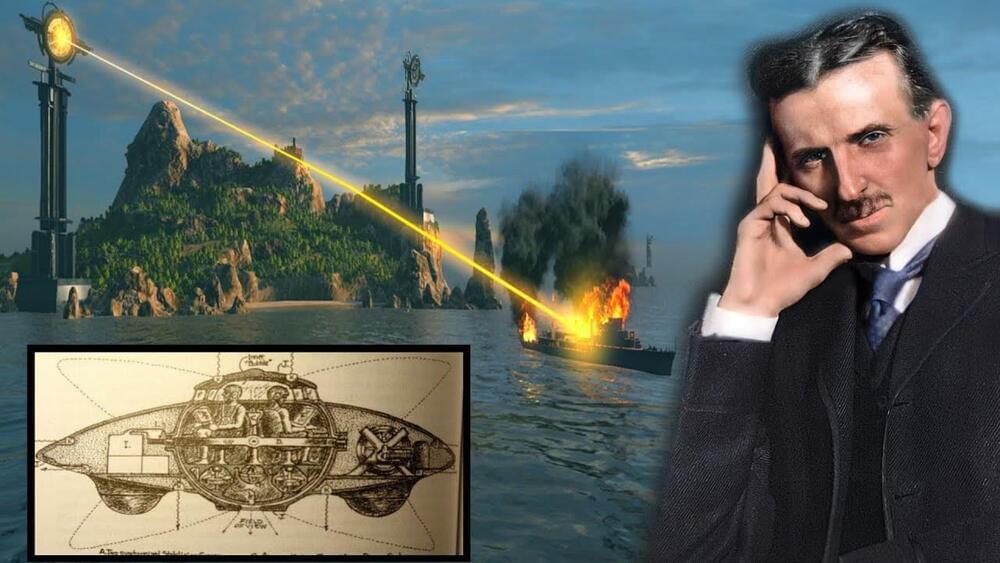With Tesla’s stock dropping, his attention may be needed elsewhere.
What will civilization looks like by the year 3000? Today we’re going to find out? Here are 10 future buildings.
DailyTop10s brings you fun and informative top ten lists in a variety of different topics. Join us and sub for regular posts.
If you have a top ten topic you’d like us to do make a video on, let us know in the comments! We usually focus on top tens that bring educational / informational value to the viewer.
Thanks for watching DailyTop10s!
In 2100,the world will be totally different for us.
Many new technologies will appear and change the future of humans. Fastest transportation systems, prettier planes, safer and prettier cities will be the norm in this future. We will live longer too.
Our current technologies are ridiculous in comparison to the technology of the future. This is the World’s Future.
Now, there are many problems that are unsolved. Issues like traffics jams, pollution, or lack of affordable housing make our cities difficult to live. But in the future, all these issues could be solved. So the world in the future can be more beautiful. But if these problems aren’t solved the future can be worse for humans.
So we made a realistic impression of the world in 2100.
This future will be exciting and amazing.
Please enjoy the video and like it!
Don’t forget to subscribe for more video of this kind.
Thanks for watching!
The Future of Transportation
Posted in drones, robotics/AI, space travel
The transportation system in the future will be very different from our current system. We will see flying cars, self-driving cars, passenger drones, hyperloop one system that is projected to reach a top speed of 760 mph (1,220 km/h) and with Starship and the Super Heavy Rocket, most journeys will taking less than 30 minutes, with access to anywhere in the world in an hour or less.
Starship-Super Heavy Earth to Earth :
With Starship and the Super Heavy Rocket, most of what people consider to be long distance trips would be completed in less than half an hour. In addition to vastly increased speed, one great benefit about traveling in space, outside of Earth’s atmosphere, is the lack of friction as well as turbulence and weather. Consider how much time we currently spend traveling from one place to another. Now imagine most journeys taking less than 30 minutes, with access to anywhere in the world in an hour or less. It’s designed to service all Earth orbit needs as well as the Moon and Mars. This two-stage vehicle—composed of the Super Heavy Rocket (booster) and Starship (ship).
Hyperloop One :
The Hyperloop is a new mode of transportation that moves freight and people quickly, safely, on-demand and direct from origin to destination. Passengers or cargo are loaded into the hyperloop vehicle and accelerate gradually via electric propulsion through a low-pressure tube. The vehicle floats above the track using magnetic levitation and glides at airline speeds for long distances due to ultra-low aerodynamic drag. Hyperloop One systems will be built on columns or tunneled below ground to avoid dangerous grade crossings and wildlife. It’s fully autonomous and enclosed, eliminating pilot error and weather hazards.
Underground Tunnels Transportation :
To solve the problem of soul-destroying traffic, roads must go 3D, which means either flying cars or tunnels. Unlike flying cars, tunnels are weatherproof, out of sight and won’t fall on your head. A large network of tunnels many levels deep would fix congestion in any city, no matter how large it grew (just keep adding levels). Fast to dig, low cost tunnels would also make Hyperloop adoption viable and enable rapid transit across densely populated regions, enabling travel from New York to Washington DC in less than 30 minutes.
Pop. Up Next :
At the heart of the Pop. Up Next concept is a simple two-seat passenger cabin that can travel one of two ways. The simpler and more conventional route involves attaching to a 60-kW (80-hp) electric powered sled and assuming the role of a self-driving car. Top speed is listed at 100 km/h (62 mph) and it would rely on a 15-kWh battery for a 130-km (81-mi) range. Pop. Up’s modus operandi is simple: passengers plan their journey and book their trip via an easy-to-use app. The system automatically suggests the best transport solution — according to user knowledge, timing, traffic congestion, costs, ridesharing demands — joining either the air or ground module or other means of transportation to the passenger capsule, and following passengers’ preferences and needs.
The World by 2100
Posted in Elon Musk, quantum physics, robotics/AI, space travel
What will the Future look like? Will Elon Musk and SpaceX make the Mars landing? In this video, we go over our Future World by 2100. For more Tech and Future content be sure to subscribe to Tech World! Thanks for watching this video: The World by 2100
Check Out These Videos:
1 Trillion Years into the Future.
https://youtu.be/R12DMYoYWFw.
How Elon Musk’s Neuralink is Changing the World.
Why is SpaceX Building the Starship?
https://youtu.be/gYgbnf3Ni5g.
#Tech #Future #ElonMusk.
0:00 Intro.
In some ways, the world in 2090 may resemble the world we live in today. Yet, two key areas will almost certainly change: the natural world and technology. Will our thirst for consumption ultimately deplete the world’s most critical natural resources? Or will technology help us persevere? And how will innovation change the way we move, work, and explore? Today, we’ll take a deep dive into these captivating questions.
Sources:
Population.
https://www.un.org/en/sections/issues-depth/population/
The Map of the World in 2090 Suggest We Have a Huge Problem.
https://www.indy100.com/discover/world-map-2090-population-d…ca-7665711
Vacuum Trains: a high-speed pipe dream?
https://www.bbc.com/future/article/20120601-high-speed-pipedreams.
Melting Ice Sheets will Add over 15 inches to Global Sea Level.
The World In 2050
Posted in robotics/AI, space travel
A short video of our world in 2050.
The World In 2050 will be totally different.
You will see how our cities will look like.
Robots, flying cars, self-driving cars, super tall skyscrapers, space exploration and many more will happen in our future.
technology and science are evolving very fast.
Enjoy this short science fiction video.
Une petite video sur le future.
-~-~~-~~~-~~-~
Please watch: “Kuala Lumpur incredible transformation and its future“
-~-~~-~~~-~~-~
How Life Will Look Like In 2050
Posted in futurism
Go to https://www.ExpressVPN.com/UniverseInsideYou and find out how you can get 3 months free.
Watch our Nikola Tesla playlist with many interesting videos on Tesla: https://bit.ly/3DNdl65
While there is still much mystery surrounding the life and death of Nikola Tesla, perhaps the most intriguing of mysteries lay in his inventions that never fully saw the light of day. Inventions such as the Death Ray, the Earthquake machine, his flying vehicles, and much more. With the intellect and creative prowess he possessed, we can only begin to imagine the thoughts and ideas he had but never shared.
What we do have, is a small fraction, a record of the incredible inventions that he either discussed, began building, or had actual working prototypes. These were never fully developed or deployed, at least not to the public knowledge, but had the potential to be world-changing… some for better and some for worse… Narration: Petra Ortiz — http://petraortiz.com Scences from History Channel were used under Fair Use. Help my channel here: https://www.patreon.com/universeinsid… here: http://bit.ly/2COJqdM T-Shirts: https://teespring.com/stores/universe… All lost robot-voiced videos can be found here: https://subscribestar.com/universe-in… 💜 Subscribe and like if you enjoyed the video. Thank you 💜 Join us on: 🌺 Instagram: https://www.instagram.com/universe.in… 🌺 Facebook: https://www.facebook.com/universalloving 🌺 Twitter: https://twitter.com/universeinsideu For Spanish narrated videos, visit my Spanish channel: https://youtube.com/watch?v=TXG5GXHaMqk&feature=share You can also help by translating or adding CC to the videos: https://www.youtube.com/timedtext_cs_p… #universeinsideyou #nikolatesla.
Narration: Petra Ortiz — http://petraortiz.com.
Scences from History Channel were used under Fair Use.
Help my channel here: https://www.patreon.com/universeinsideyou.
Majik Water is a social enterprise that specializes in air to water technologies in arid and semi arid regions. They are creating a new source of affordable, clean drinking water for water scarce communities. If you have air, you can have drinking water.









